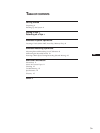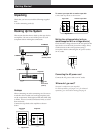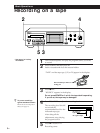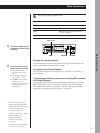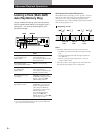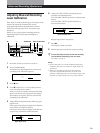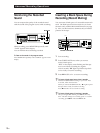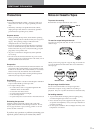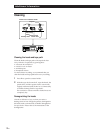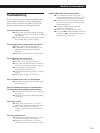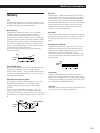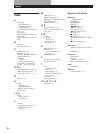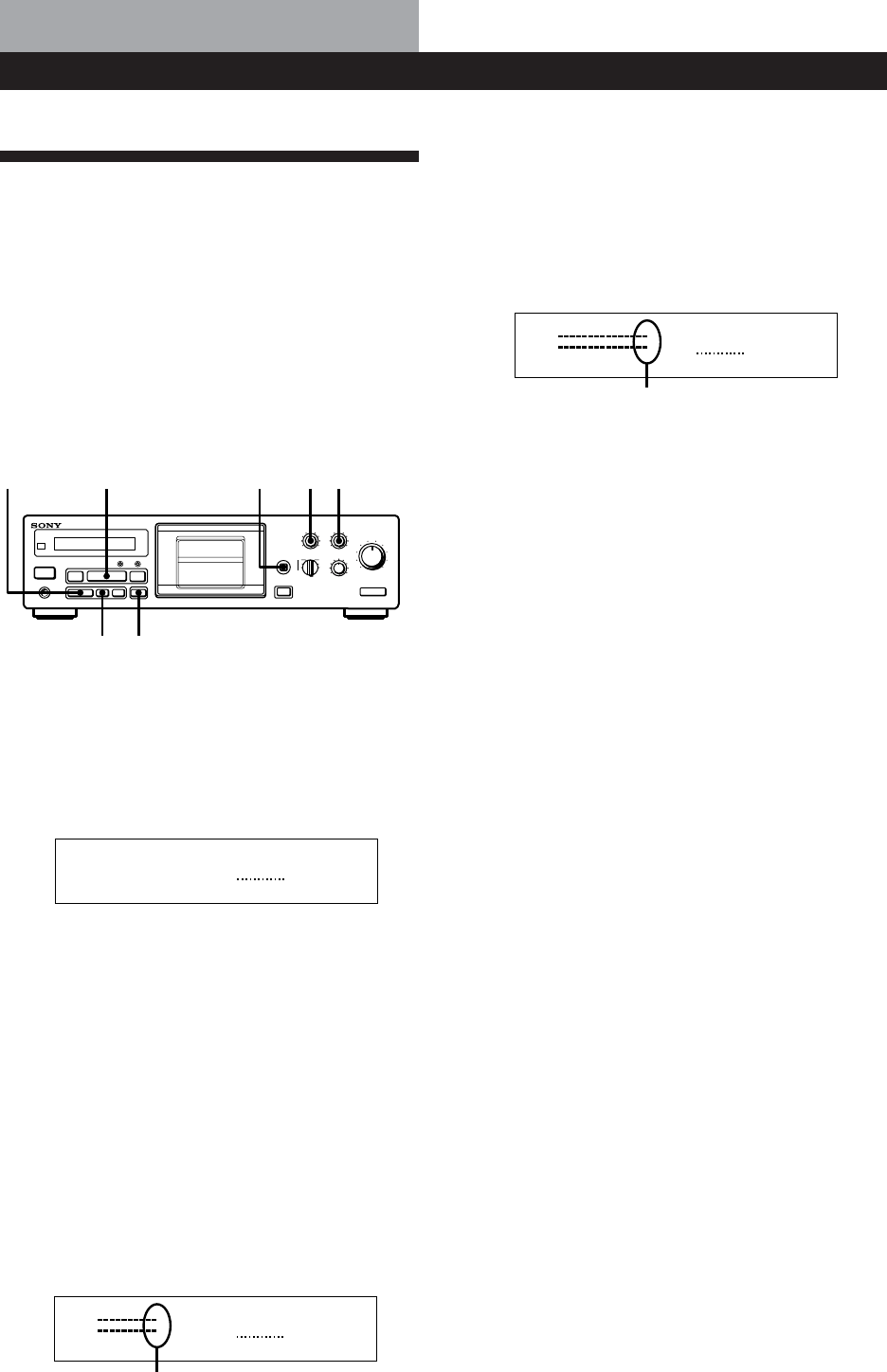
Advanced Recording Operations
GBGB
9
EN
Equal signal level
Recommended level
L
H
TYPE
REC CAL
9
9
L
H
TYPE
REC CAL
9
9
L
H
TYPE
REC CAL
9
9
R®
§
º
‚
REC MUTE
PAUSE
REC
π
·
OFF
L R
MPX
FILTER
DOLBY NR
BALANCE
CALIBRATION
EJECT MONITOR
REC LEVEL
0
1
2
3
4
5
6
7
8
9
10
MEMORY
CC
B
B
SS
AMS AMS
∏
RESET
COUNTER
L R
CAL REC LEVEL
L R
BIAS
PHONES
CAL REC LEVELBIAS
P PAUSE
p·
r REC
CALIBRATION
U
6 Adjust CAL REC LEVEL so that both meters
reach the recommended level.
Turn CAL REC LEVEL clockwise to increase both
meters.
Turn CAL REC LEVEL counterclockwise to
decrease both meters.
Repeat steps 5 and 6 if necessary.
7 Press p.
The display returns to normal.
8 Rewind the tape and start the actual recording.
z You can also adjust the bias current and recording
level calibration according to your own taste
For details, see page 15.
Notes
• Because the meters use a wider amplitude during tape
calibration, they are more sensitive to slight changes in
signal level.
• When you use metal (type IV) tapes, the frequency
response to adjustments of the bias current is small.
Therefore, adjusting the bias current with the range of this
tape deck (a range of about ±20%) may not be effective.
Advanced Recording Operations
Adjusting Bias and Recording
Level Calibration
Since there are many different types of cassettes on the
market, the tape deck automatically sets the
appropriate equalization characteristics and bias
current for each tape type (ATS: Automatic Tape
Selection).
However, you can get better recording results by
adjusting the bias current and recording level
calibration.
1 Insert the cassette you want to record on.
2 Press CALIBRATION.
The display for adjusting the bias current and
recording level calibration appears.
3 Press r REC.
4 Press P PAUSE or · to record the test tones.
(You can’t hear the test tones.)
After two or three seconds, the meters showing
the level of the test tones appear in the display.
Then adjust, in sequence, the bias current and
recording level calibtation.
5 Adjust BIAS so that both meters indicate equal
signal levels.
If the upper meter shows a higher level than the
lower meter, turn BIAS clockwise.
If the lower meter shows a higher level than the
upper meter, turn BIAS counterclockwise.





